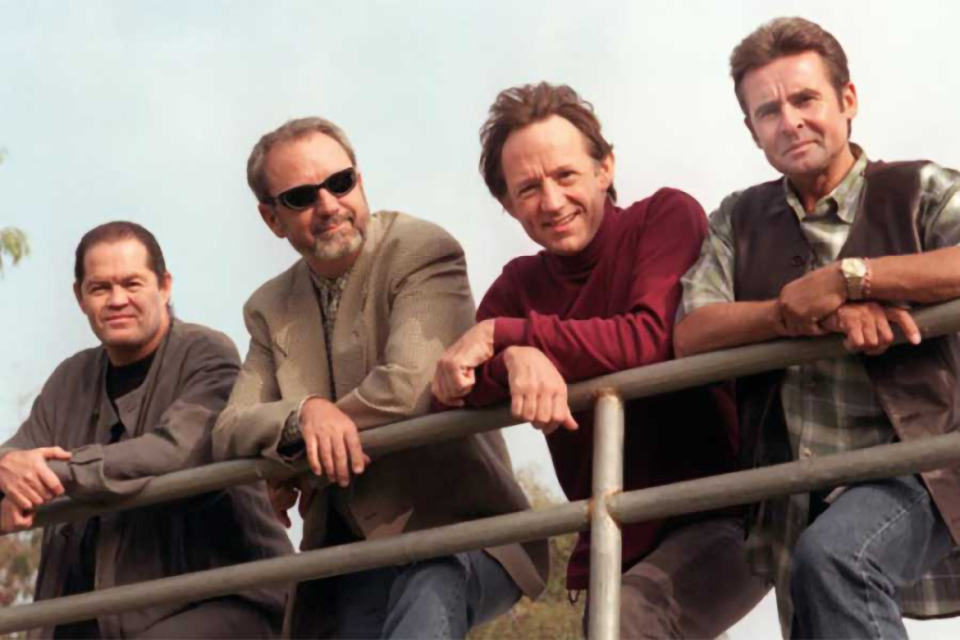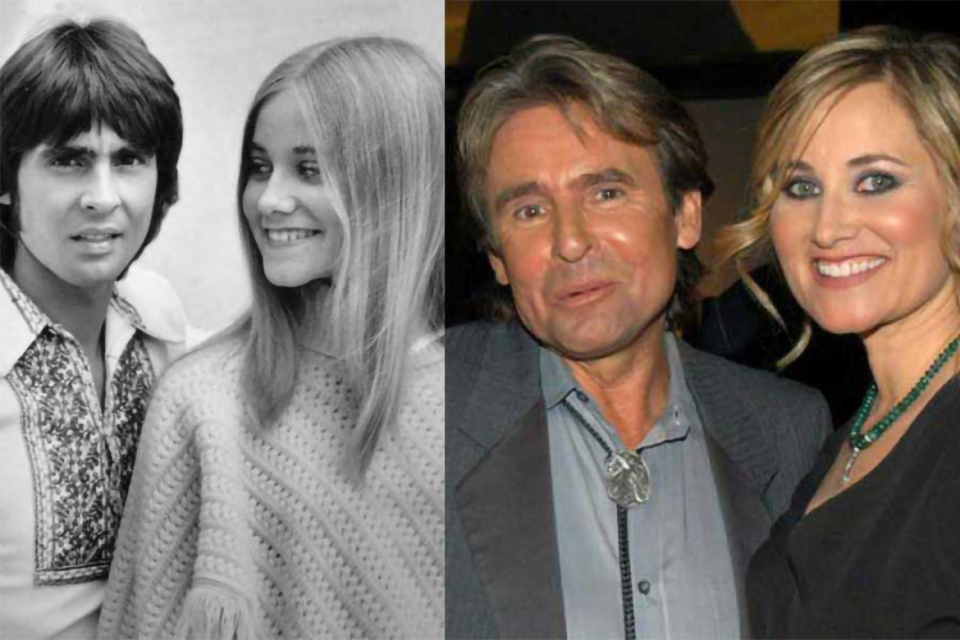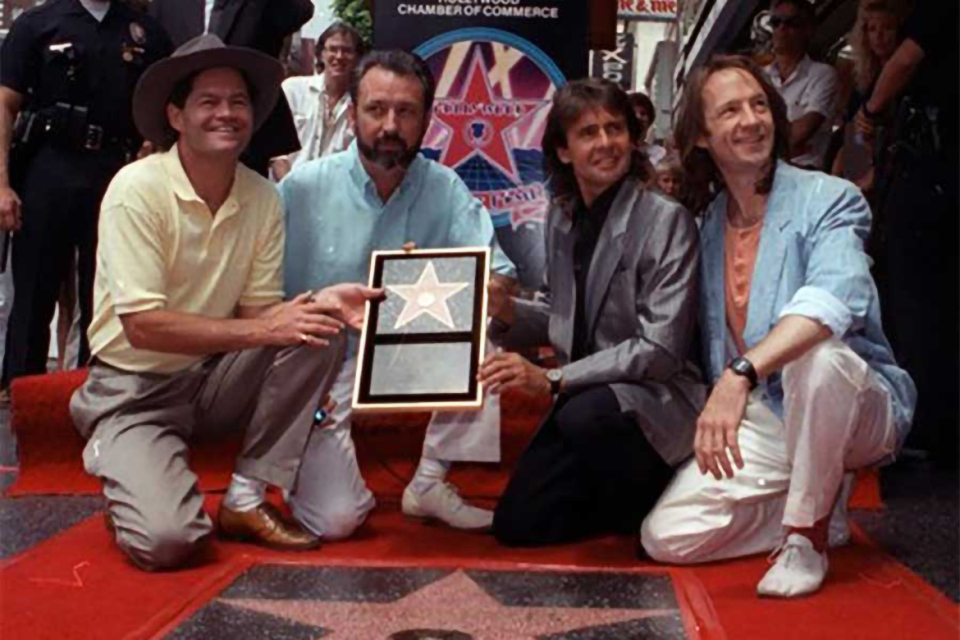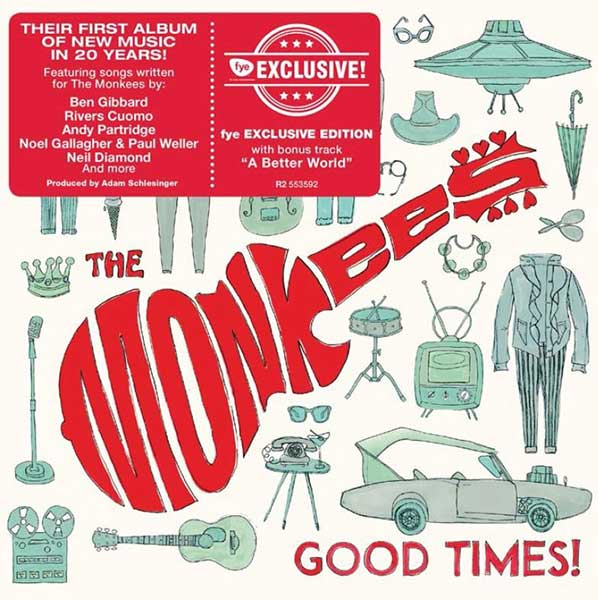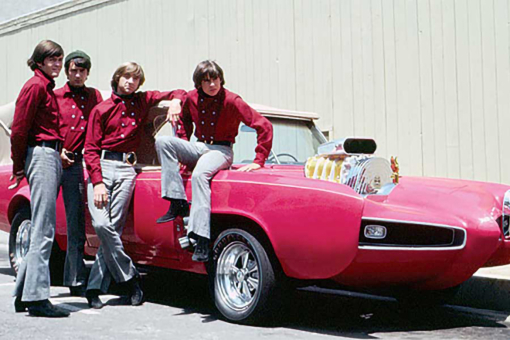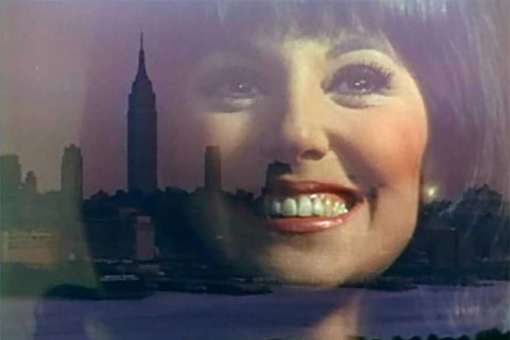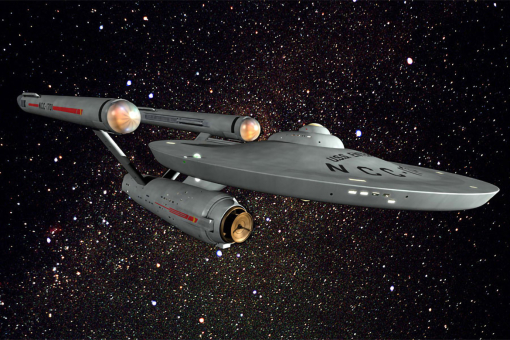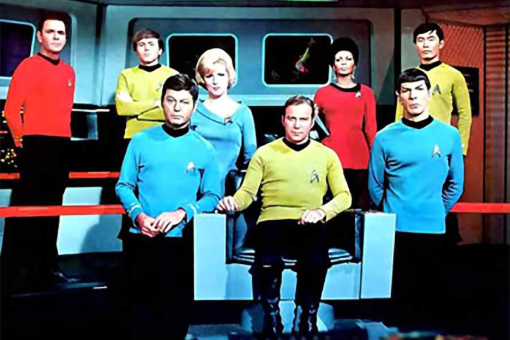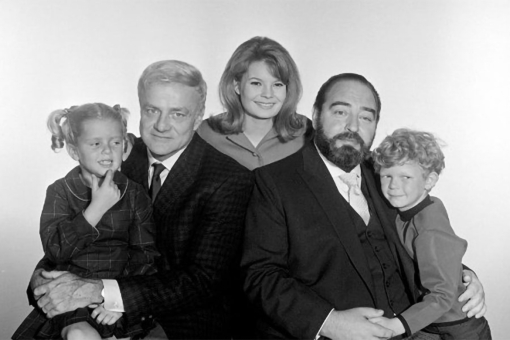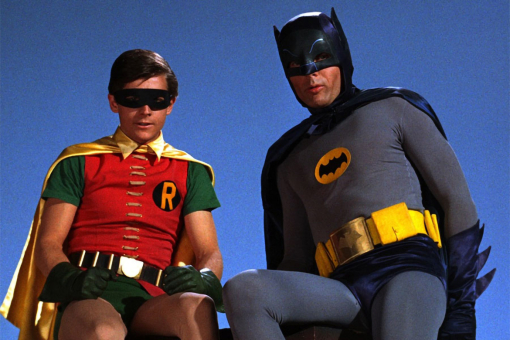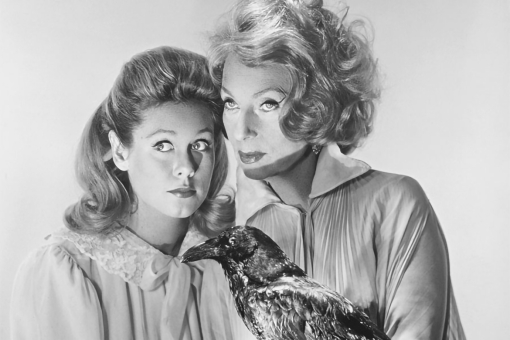Producers Andrew Sandoval, John Hughes, and Dan Wingate are helping to celebrate and document all the Monkee business and TV influence with a splashy new 50th Anniversary release of The Monkees on Blu-ray, which will be released by Rhino.
Wingate says he and Sandoval commenced an exhaustive search of the film materials in July of 2015, gathering “over 40 boxes from the Underground Vaults in Kansas in two marathon sessions at the Rick Chace Theater in Burbank complete with refurbished Moviola for quick reference.”
The Blu-ray set will feature new HD transfers of the show’s episodes from the original 35mm source materials, the restored 1968 Monkees theatrical film Head, and the 1969 TV special 33 1/3 Revolutions Per Monkee, the latter of which was re-mastered utilizing newly-discovered tape material in the vaults from Sony, the show’s proprietor.
“The bonus disc is jam-packed,” Wingate relays, “and includes promos, commercials, commentaries and some surprises I can’t reveal. It’s a fantastic set, and I’m very proud to be a part of it and proud of Rhino for their total commitment to doing right by the consumer. We all really busted our butts on this one.”
They did so because, as Wingate says, “The Monkees is a unique show in Columbia’s Screen Gems library. Most of their ‘50s and ‘60s comedy shows had an adult skew and standardized comic pacing. They broke that pattern and ushered in a more freeform structure with faster cutting, and more realistic dialogue with an incredible amount of subtext to boot.
"Obviously, they also had really great music that was imaginatively incorporated into the episodes and gave a great boost to the show’s youthful energy. It was one of the few sitcoms of the ‘60s I liked as a kid. Those boys behaved like my friends and I did…crazy!”
Along with Jackie Cooper, Columbia executive Harry Ackerman supervised the studio’s TV product during the 1960s and early 1970s by way of its small-screen sister-division Screen Gems. He also happened to be married to actress Elinor Donahue, star of classic TV’s Father Knows Best.
Their son Peter Ackerman shares his unique insight into the workings of The Monkees sitcom, which he describes as “my first beloved television show, along with Batman."
“Even by the time The Monkees aired I had watched my mother on reruns of Father Knows Best, there was yet to be a show that appealed to me. Then both Batman and The Monkees came around in 1966, when I was only four, but I was all-in.
"Perhaps because my father was an executive producer for Bewitched over at Screen Gems, he was able to get advance items that were part of the shows of the time. Of those I remember him bringing home was the Monkees' third album, Headquarters, which I love to this day.”
In 2016, the Monkees mark their fifth decade by rolling out Good Times! - their first new album since JustUs and 1997 (the year ABC aired the reunion special, Hey, Hey, It’s The Monkees, a title nod to the original show’s pulsating opening theme song).
While hits like “Last Train to Clarksville” and “I’m a Believer” remain revered by Monkee mavens everywhere, Good Times! mixes all-new tunes, such as the first single, “She Makes Me Laugh,” and “Love to Love,” written by Neil Diamond (and involving Davy Jones).
Also included on the new collection are never-before-heard tunes that were recorded in the ‘60s, all just as the band embarks on an expansive tribute tour across America in a post-MTV-world that they helped to create.
Musicians Bobby Hart and Tommy Boyce, of Boyce & Hart fame, composed hits like "Last Train To Clarksville," "(Theme From) The Monkees," "(I'm Not Your) Steppin' Stone," "She," "Valleri," and "Words" for the Monkees.
Boyce passed away in 1994, but fortunately Hart is still with us, and was involved with the production of Good Times! - which has become the best-selling new music CD on Amazon.
“Isn’t that something?” Hart says. “Who would have imagined that? We were just always chasing our next hit, and nothing more than that. We were just always thinking we have to get something going for the next month. And now 50 years later, it’s gratifying and fun to see how popular the Monkees still remain.”
Boyce & Hart’s link with the Monkees ultimately began when the Aldon Music Publishing Company, founded by Don Kirshner and Al Nevins, was purchased by and incorporated into the Screen Gems Columbia Music Publishing Company who, Hart says, “hired Tommy and I right away.”
As Hart recalls, after the California-born Boyce & Hart enjoyed a few hits in New York, with artists like Little Anthony & the Imperials, and Jay & the Americans, Screen Gems/Columbia brought them back to the West Coast to write songs, which they did for a number of years.
At one point, their contract was up for renewal and, as Hart states, “We negotiated not only for songwriting, but for our own record company, and a development deal for a sitcom,” which is why Boyce & Hart made guest-appearances in several Screen Gems shows beyond The Monkees, such as Bewitched, and I Dream of Jeannie.
But it was specifically with the Monkees, in both the images and sounds of Dolenz, Jones, Nesmith and Tork, that Boyce & Hart made their indelible mark.
As Hart says, “We had plenty of time to work up to that. We got hired for almost a year before the four guys were cast and the show was sold. And we knew the show was a big opportunity for us. So we spent a lot of time thinking about what the sound should be…the influence to use and not use.”
When it came time to produce records for the Monkees, Hart says, he and Boyce “kind of knew what that sound would be.” They made the conscious decision to use Hart’s band, the Candy Store Prophets, with whom he had been performing in clubs around L.A during the entire time they were producing the Monkees first album.
They dipped into the Candy Store rather than utilizing the studio musicians which as Hart admits, “We normally would have used and everybody in production in town was using at the time.”
Instead, Boyce & Hart wanted their Monkees music “to sound like a real band, like a garage band…not like all the other records out there at the time. That had a lot to do with the unique sound, and it still sounds that way 50 years later.”
As to what Hart feels is the successful secret to The Monkees in particular, he says it was “the first time in television that there was a show about kids that didn’t have an authority figure…a Mom and Dad not looking after them. It’s also the first time that long-haired musicians were starring on a network sitcom. And I think things are cyclical…things come and go…tastes and styles and fashion. And then they’ll come back again.
"With the Monkees it was just the right timing…full of the Marx Brothers style of slapstick, and some of the other great creative comedic styles that Tommy and I really appreciated, like W.C. Fields, and other [performers] from the ‘30s and ‘40s. Along with the Beatles, it was time for all of that to cycle back. It was all just a crazy, energetic romp of pure energy.”
Hart’s own guiding principle fit right into that of The Monkees, “I’ve always been looking for something [to do] that would make people happy.”
The Monkees was certainly that. As Gary Strobl says of the TV series, “The Monkees was about four young guys having a good time on a show filled with joy, fun, lots of energy, and bright colors [originally stemming from the era of NBC’s surge of “in living color” programming].
"The music was wonderful, and the comedy and stories were simple, light-hearted and, in many ways, heroic. They were always trying to help someone, whether they saved a princess from drowning [“Royal Flush”], or someone in a haunted mansion [“Monkee See, Monkee Die”] or a little boy with a horse [“Don’t Look A Gift Horse in the Mouth”].”
Strobl, a child of the ‘60s, adds, “They were all really good storylines,” many of which wisely featured children – which represented a key demographic at the time. As he goes on to explain, “That was the market that the Beatles left behind. The Monkees simply filled in that gap every Monday night. It became a big deal for kids to watch. I remember myself attending grade school, and talking about the show. It was all very exciting.”
Special-event coordinator Carolyn Peterson, also of the baby-boomer generation, enjoys all things retro-television and music, and today organizes several tributes a year geared toward those genres.
In 1967, at just 11 years old, she “fell in love” with the Monkees after attending a live concert at the Forest Hills Stadium (with the legendary Jimi Hendrix as their opening act).
Peterson, too, looked forward to Monday nights. In between periodic visits to her friend's house to watch The Monkees shine on an upgraded color TV, she viewed Davy, Micky, Peter and Mike on her tiny black and white set for what she calls “a half an hour of pre-pubescent bliss.”
Fast-forward to 1990, the year her now 36-year-old son Bryan turned 10, and to whom she introduced the show by way of reruns on TV Land. “He was immediately hooked,” she recalls. Upon turning 12, he subsequently received what his mother calls “the same treat” she enjoyed at that age: a Monkees concert.
By 2012, the parent Peterson became the proud owner of the complete set of The Monkees’ pre-Blu-ray DVDs, which she then began screening for her friend's 11 year old daughter who “immediately fell in love with them, with her heart going out to my favorite, Micky.”
“I understood why I loved them way back in the '60s,” Peterson says. “But here was yet another generation falling in love with them decades later.”
Expanding on Strobl’s assessment, she notess, “The show was funny - plain and simple. It had its own look, its own originality, four lovable lads, great music, and an appeal that spans all ages. It's fresh, it's hip, it's different and it's hilariously goofy. It appeals to the child in all of us. And, in the end, isn't that what it's all about?”
Digital marketing consultant Kimberly Niccole Scamman, 26, says yes.
Scamman, like Peterson’s son, became a fan as a pre-teen when she caught a rerun, this time on Nick at Nite, the prime-time off-shoot of Nickelodeon (the precursor to TV Land).
Upon first contact, The Monkees was, as she puts it, “the greatest thing I had ever stumbled upon.” Mesmerized by the overall style, music, and television of the ‘60s and ‘70s, Scamman says sitcoms such as Get Smart, Bewitched and The Monkees make her believe that she should have been “born in a different era.”
“However,” she clarifies, “there was something special about The Monkees. It was both innocent and absurd. It fascinated me so much that I never wanted to blink while watching the show for fear of missing a single moment. This was definitely a response to their comedic talents.”
Although she appreciates the Monkees’ “wonderful comedic chops,” it’s their harmonic sounds that have resonated most with her over time. Having attended several reunion concerts, Scamman has grown to respect the group as “multi-faceted artists. They each represented something different, so that most people could identify with at least one of them.”
But as she sees it, no Monkee stands out more than Jones, who later played himself in a special guest-appearance as a super-prom-crush for Maureen McCormick’s Marcia Brady on ABC’s The Brady Bunch, another iconic TV sitcom.
In the Brady episode, “Getting Davy Jones," Jones not only escorts Marcia to her prom, but introduces the now famous single, “Girl,” composed by Charles Fox (who wrote, among countless other melodies, the rousing theme music from Lynda Carter’s Wonder Woman series).
Jones also performed the tune for Christine Taylor’s take on the Marcia-Marcia-Marcia character in the 1995 big-screen satirical hit, The Brady Bunch Movie.
For these reasons, and others, Scamman says, “My favorite Monkee was and always will be Davy. At eight years old he was my first crush.”
While her friends plastered their bedroom walls with Teen and Tiger Beat magazine posters of pubescent TV stars like Home Improvement’s Jonathon Taylor Thomas and Boy Meets World’s Ryder Strong, Scamman surrounded herself with images of Jones, who once professed, “I used to get hate-mail from girls all over America because I wouldn’t go to the prom with them.”
Not so with Scamman who, if not escorted to her prom by Jones, certainly experienced a fantasy-come-true of another kind. The first Monkees-related concert she attended was a solo show featuring Jones in Las Vegas. As she recalls, “My mother drove me all the way from Boise when I was 14. When we arrived the venue staff told us that I couldn’t attend because I was under 21.”
At first, she was devastated, but then something magical transpired.
Hotel staffers consulted with Jones and the pop-TV star “actually came down and talked to me for quite awhile. He also got me and my mother into the show. I’ve always remembered that extremely kind gesture. It was my ‘Marcia Brady moment.’”
Scamman, too, has several favorite Monkees moments on screen, but the episodes “Monkees in a Ghost Town” and “Monkee Mother” are high in the pack, mostly because they feature guest-star Rose Marie, best known as Sally Rogers on The Dick Van Dyke Show, another Scamman ‘60s TV favorite.
"Monkee Mother," in particular, also “had a lot of heart,” she says, classifying such segments as “winners” because they showcase “the seriousness amidst the outlandish comedy.”
Other of her prized episodes spotlight the “after the show” interview segments, during which at least one member of the group usually cites that they are “running one minute short.”
She says such moments not only succinctly displayed “the appeal of not just the characters, but how important they were to fans as people/personalities on their own.” The series “in general has something wonderfully imaginative and outrageous about it, which has helped it stand the test of time. Like other classic TV shows, it is simply pure fun.”
“Within the vein of absurdist comedy,” Scamman continues, “The Monkees was groundbreaking, and it actually took on some interesting issues such as censorship [as in “The Devil and Peter Tork,”], and winning two Emmy Awards, including Best Comedy Series, has to say something about both its quality and appeal.”
Regarding the proverbial Monkees/Beatles debate, she decides, “There isn’t one. Each of [the Monkees] played instruments, as that was a prerequisite for casting the show. Peter Tork and Michael Nesmith came to the project as incredible musicians, and Davy came as an established Broadway talent. Micky learned to be a drummer, and a good one at that.
"Even though they weren’t allowed to play on the first two albums I think what’s astonishing is that they accomplished something that they were never ‘supposed’ to be allowed to do, and then they kept doing it and improving on it.”
While she admits that the show was created to capitalize on the success of A Hard Day’s Night, “…it took on a life of its own and became something unique.”
Consequently, she never quite understood the comparison between the Monkees and the Beatles. “You have to dig a little below the surface in my opinion,” she adds. “The Beatles are the Beatles. The Monkees are the Monkees. The world has managed to exist with both, and I think the world will continue to exist with both.”
As Carolyn Peterson remembers it, “In 1966, the Beatles were going through some changes both musically and physically. They were no longer the cuddly little mop-tops that could send a pre-teen into mild hysterics. And then along came these four adorable ‘replacements’ who not only sang but delighted us week after week with their zany antics.”
Despite their different images, Peter Tork once observed that there was never any animosity between the two chart-topping troupes. In fact, they sometimes socialized with one another. “They were very courteous,” he has said of his U.K.-based choral compadres.
Gary Strobl concurs, saying, “Absolutely, there was a mutual respect between the groups.” In fact, John Lennon once told Mike Nesmith, “You know, there used to be only four of us to know what it feels like to be in this position in the world, and now there are eight of us.”
The most serious Monkee conversing with the most outspoken Beatle as he defined both bands in this way was, as Strobl sees it, “The biggest compliment anyone could receive in a lifetime. John just simply ‘got it,’” when acknowledging the similarities and differences between the two performing factions, ultimately defining them as one inclusive group.
However, Strobl also found another quote of Lennon telling the Monkees, “I think you’re the greatest comic talents since the Marx Brothers. I’ve never missed one of your programs.”
Dolenz agrees. “In retrospect, The Monkees was much more about the Marx Brothers than it was the Beatles. And it was John Lennon who originally made that comparison.
"The Monkees was like a musical on television…a little bit like what became Fame, Glee, or Smash. But of course [we did it] 50 years ago. And it was unusual for its time.
"But if you look at a Marx Brothers musical…they were 90-minute comedies about some silly plot, and the singing and the dancing. The Monkees was not the first on screen, in general] to do dance and music for teens. Busby Berkely did that pretty well. But it was the first time that it happened on television.
"And the way I look at it, it was a little half-hour musical comedy with vignettes. There was a little comedy…there was a bad guy…and a good guy. And then there were some music videos. But that’s not what we called them at the time. At the time, they were called a 'romp.' The director would say, “Ok, now we’re going to do the romp.”
"It was a way of putting the visual context to a song of the week. And that was a way of promoting the song, and it usually was a chase or some kind of silly thing with girls and dancing.”
“But at the time, of course, it was very unusual. It was a unique. And again, that’s what endeared it all to the people out there.”
“Again, you have to remember, this was a very scripted show. I have all the scripts still, to this day. The romps weren’t scripted. All it said was ‘Romp.’ And it depended on the episode…the cast…the song…it depended on what Jim Frawley, or Bob Rafelson or whoever [guiding that particular episode] wanted to do in terms of an audio/visual experience.
"That was all improvised. The romps were almost 100% improvised, as was much of the dialogue in the show at times.”
As it was from the onset, with the episode “Royal Flush,” a very special copy of which James Frawley recently received in the mail, with the script, signed by “everyone.”
“It was a very touching moment to see that script, which we did 50 years ago, ” he says. It just doesn’t seem like it could be that long ago.”
It’s this type of sensitivity that Frawley brought to The Monkees that endeared the series to its initial viewers, some of whom join other loyal followers still, all these decades later.
“Because I was an actor myself,” he goes on to say, “I was trained to be kind of personal in my work…to really express how I felt about who I was, and what was going on in the world. And I tried to bring that kind of sensibility to The Monkees.”
To read the rest of the story, click here for Part I.
For more 50th Anniversary stories, click here.

